Acute myocardial infarction and Yin Yang imbalance
Adrián ángel Inchauspe
School of Medicine, National University of La Plata, La Plata, Buenos Aires, Argentina
1. Introduction
For thousands of years, the wise Chinese doctors have established really precise routes that correspond with the organs and viscera of the human body.
With a few exceptions (such as the Girdle Meridian or Dai Mai),these paths describe longitudinal vectors throughout our bodies;that is the reason why they were called “Meridians”. As it was said before, the wise Chinese have, for centuries, studied the human body and established, with “meridian precision”, the paths through which human energy runs.
And I do say “throughout the day”, since each meridian is associated with a definite moment depending on whether such energy ran a certain organ (or viscera) within a fixed timetable.
Long before the western concept of “circadian cycle”[1] appeared,the Chinese exactly knew which way and at what time our vital energy ran through our bodies, developing a surprising diagnosis as well as therapeutic certainty in their medical treatments.
As a kind of “Retro-Medicine” or “Inverse Medicine”, the author has been researching for decades, under a scientifically and methodologically analysis, the usefulness of certain therapeutics and parameters of Chinese Medicine, in order to clarify their pathophysiological mechanisms[2] to be able to use those techniques in the present medicine.
Far from being a mere coincidence, the effects of the light cycles throughout Yin/Yang over the meridians of acupuncture seem to correspond with later western research, such as those referred to the relationship between the circadian cycle and the myocardial infarction, apart from other severe cardiovascular pathologies also considered as “extreme urgencies”.
We will thus study which coincidences lead us to think of this relationship that involves high frequency and severe illnesses all over our planet.
2. Material
2.1. Background
As in many other occasions, the Western world has “applied” this knowledge, without taking into account the history of its origin.In almost every aspect of science, in general, there exist parallel developments that unfortunately have not considered their evolution which has been successful in the other side of the world.
2.2. Circadian cycle: concept
Circadian cycles (from the Latin circa, meaning ‘a(chǎn)round’ and ‘dies’meaning ‘day’) are oscillations of the biological variables at regular intervals of time throughout the day.
Every living creature –from microorganisms to plants and animalsshows some kind of physiological and rhythmical variation(metabolic rate, heat production, flowering,etc.) that is associated with an environmental change, also rhythmical, with variable periods that range from seconds to years. These rhythms persist even under lab conditions and when there is lack of external stimuli[1].
2.3. History of the study of the circadian cycle
Knowledge of the frequency of natural and environmental phenomena dates back to earlier times in the history of mankind.The periodic variation of biological phenomena - and their impact on health conditions or disease - occupied a very important place in medical doctrines of antiquity[1].
We have already seen how the Chinese claimed to know the causes and consequences of these processes. Said concepts were submitted to the wise observations made by the Greek naturalists. Aristotle and later Galen, described the periodicity of sleep; the flowering of plants; the seasonal reproduction of animals; the migration of birds; the hibernation of some mammals and reptiles, and other daily phenomena which were initially considered as a result of the cyclic routine imposed by the environment[1].
It was 250 years ago when the French astronomer Jean de Mairan found out that the circadian cycles were not a passive response to the environment but came from an endogenous source.
In 1832, Agustín de Candolle noted the daily rhythm of cycles in plants; but it was only towards the end of the XIX century that Aschoff, Wever and Siffre carried out the first investigations about these cycles applied to human beings. In 1960, Franz Halberg –founder of Chronobiology- coined the term circadian for the study of formal biological rhythms[1] (Figure 1).
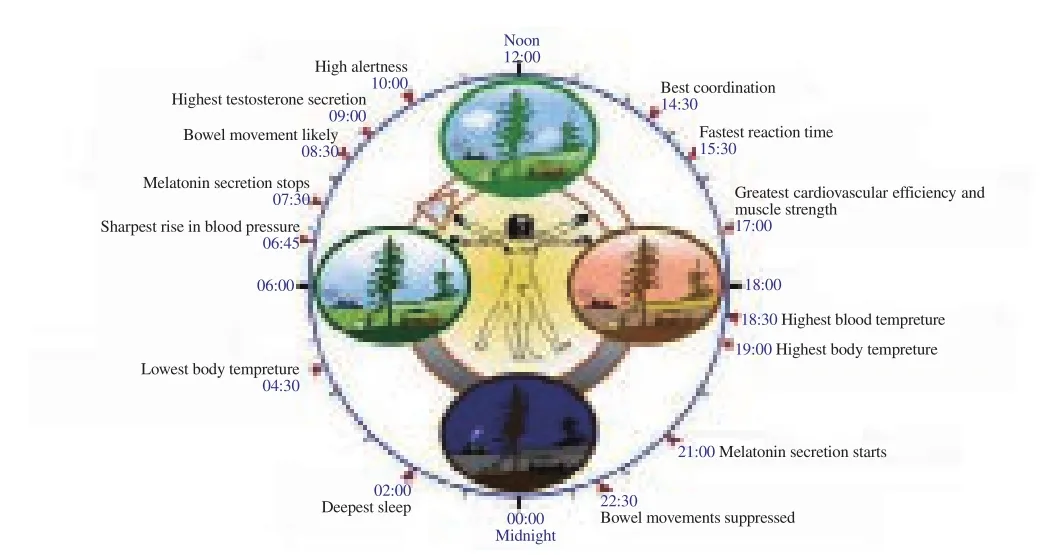
Figure 1. Diagram of the chronobiology of human physiology[1].
2.4. Origins of the circadian cycle[1]
Circadian cycles are believed to have originated to protect the replication of DNA from high ultraviolet radiation during day-time,relegating such function to the dark[1].
In eukaryotic organisms, this would be the way to regulate their circadian rhythms, thus determining sleep patterns or of brain activity as well as the dynamic of hormonal axes and of cell regeneration.
2.5. Characteristics of circadian cycles
These endogenous rhythms are synchronized with light or thermogenic cycles that stabilize in a steady state of about 20 to 28 h,making it longer or shorter according to the environmental cycle.They have the following characteristics:
· They are endogenous.
· They oscillate within a period of about 24 h (hence their name:circadian).
· They have mechanisms of temperature compensation.
· The rhythm readapts under certain light environmental conditions.
· Generally, the period for day species is longer than 24 h and for night species it is shorter than 24 h (Aschoff’s Rule), with some exceptions[1].
The cyclic or environmental change that is able to synchronize an endogenous rhythm is called synchronizer or Zeitgeber in German.
2.6. Human hormones affected by the circadian cycle
There exist a series of biological hormonal human processes that are subordinated to the circadian cycle. Some of the hormones involved are[2]:
?During the morning:
- Adrenalin: When we wake up it leads us to an alert state.
-ACTH: It acts on the suprarenal cortex, stimulating steroidogenesis.
- Dopamine: It activates reasoning and the ability to solve problems.
- Approximate peaks of these hormones occur at about 11.00 a.m.
?During the afternoon:
-Insulin: 5-17 hour-phase: tissue repair; 17-5 phase: accumulation adipose tissue.
-Cortisol: In response to stress, it turns food into energy and regenerates muscles.
-TSH: It acts over follicular thyroid cells, stimulating hormonal synthesis from 22 to 6 hs.
?During all throughout the day[3]:
-Neuro-hormones of intestinal epithelium: they regulate hunger,appetite satiation and energetic balance.
-Hexokinase: key/main enzyme in the processes of glycolysis.
-Rennin: enzyme that regulates hydric metabolism.
-Brain natriuretic peptide (BNP): neuro-hormone used to determine myocardial infarction, acute coronary syndrome and follow-up of transplanted heart[4].
Additionally, circadian cycles experiment seasonal changes(circannual rhythms), causing oscillations in hormone concentration in blood according with these periods of time[1].
As we have seen, the arrival of hormone therapy has been focused on circadian cycle[2]. Curiously, the first treatment for thyroid goiter was carried out in China many millenniums ago.
In a certain way, the Chinese started to understand that there exists a precise neuro-endocrine rhythm that ensures/guarantees our subsistence throughout the day; thus giving the basis for chronobiology for the meridians of Acupuncture since remote times.
2.7. Circadian cycle and Ying/Yang
“The great secret of the immortal improvement and harmonious universe is expressed in the symbol of Tai Chi. Even the so-called Nature can grasp it. Everything takes a little of something. The basic structure of the Universe than is generally recognized as time and space is not something solid ... Time and space do not have their own nature”[5].
There exist many different representations of Tao even in China.Nowadays, we know very little about this famous symbol. This design - originated by Wei Bo yang of the Later Han Dynasty (25-221A.D.) as a visual teaching aid - was said to be finalized by Chen Xi yi, a renowned Taoist scholar and occultist of Song Dynasty 960-1126 A.D.)[6].
According to Stefan Jaeger, author of the second chapter of “Recent Advances in Theories and Practice in Chinese Medicine” entitled: “A Geomedical Approach to Chinese Medicine: The Origin of the Yin-Yang Symbol”[7], it would seem that this diagram called Xiantian Taijitu was created by the Chinese in order to demarcate the course of Yang,that is to say of sunlight, during the day[8]. The author thinks that such delimitation was made during the seasonal periods between the winter solstice and the summer solstice[9] (Figure 2).
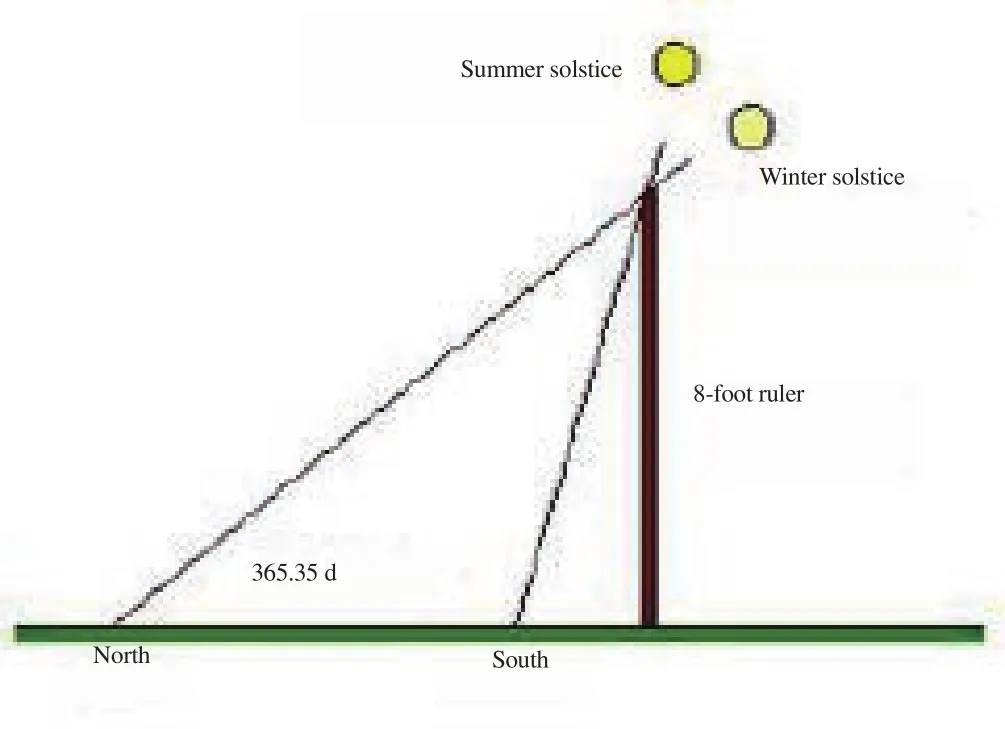
Figure 2. Annual demarcation of Yang /solar light course[10].The source is from www.chinesefortunecalendar.comyinyang.htm[10]
Even though Jaeger developed an interesting theory of the “shadow model” of Tai Ji Tu and speculated about the application of complex formulae to make its design[11], there is still no “clear evidence”about the theoretical fundamentals of Yin demarcation; that is to say, the predominance of the twilight/shadow. We could say that the undulating part of the semi-circle that was missing might have been done directly; that is to say, a “negative image” of Yang (Figure 3).
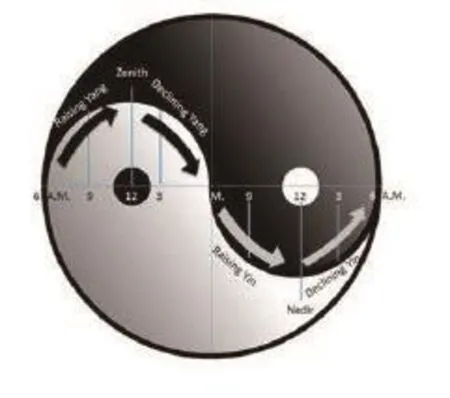
Figure 3. Yin / Yang and the Circadian cycle[12].On this, Su Wen illustrated us with this quote:“Heaven is Yang, earth is Yin; the sun is Yang and the moon is Yin”[13].
However, it might have happened that, as well as they decided to demarcate the course of sunlight, they could also have made the same as to lunar reflex – similar situation to the concept of Yin,according to the Chinese Medicine. In that way they defined the brightness of full moon in the opposite time of the year: that is to say,from summer solstice to winter solstice. Anyway, the latter is just an assumption to explain the phenomenon; instead, the contribution made by Jaeger represents a key milestone to “shed light” and clarify the mysterious origin of the Tao diagram.The sinuous dividing line between Yin and Yang generally appears upright. However, I consider that in order to interpret the effect of light as well as twilight or darkness throughout the day, it is better to appreciate the diagram with its line reclining down, allowing Yang to begin on the right of the illustration, showing in this way, the course of sunlight during the day more clearly (Figure 3).
2.8. Circadian cycle and cardiac cycle
“With those who adhere to the belief in demons and deities, it is futile to discuss the virtues of medicine. With those who deplore acupuncture,it is meaningless to discuss it marvels”
Nei Jing Su Wen, Chapter 11: ”Additional Discussions of the Five Viscera”[14].
We are aware of the fact that, even though the ancient Muslim medicine already knew –thanks to the work of Ibn Nafis about blood circulation towards the XIII century, it was Miguel Servet(1509- 1553) one of the first to get to know this issue outside the Western world; that was why he was awarded with the prize that the church used to give to heresies at that time: he was burnt at the stake. Sometime later, it was William Harvey the one who definitely established this circulatory route about 1616, that is to say, 3 500 years after the Chinese had noticed how blood ran from and towards the heart.
At present, we already know which periods of the day are related to the heart and its vulnerability to suffer heart attacks (modern references quoted hereinafter will show that). And it is also known,that the Chinese had already identified the possibility of this serious risk thousands of years before.
2.9. Ling Shu approach regarding heart’s circadian vulnerability
The cannon of Acupuncture –Ling Shu- has made specific reference to this moment of vulnerability that is present during the chronobiological cycle, as it appears in chapter 40 of said work. In that part of the book we can read:
“The Heart, which corresponds with Fire, will have a worsening period from 17 to 19 hours, moment of the passage of energy to the Kidneys,which correspond with Water; Fire fears Water, since Water (Kidneys)triumphs over Fire (Heart)”[15].
It is hard to believe how the Chinese masters, since remote times,already had a profound knowledge –similar to the present scientific research, about the relationship between myocardial infarction and the circadian cycle. Its exact time –resulting from a deep analysis of the interrelation between the Elements that produced them and the daily cycles of light and shadow established by Ying/Yang- make us surprise and wonder about their power.
2.10. Su Wen approach regarding heart′s circadianvulnerability
The Cannon of Acupuncture is completed with another masterpiece of Chinese Medicine: the Su Wen, in which there is an exact reference regarding the circadian cycle and the passing of cosmic energies throughout the day:
“Ying and Yang flow continually, and they complete their circulation in one day and one night”[16].
Later, it describes in detail the natural course of this chronobiological circle regarding the constant and contrasting interchange of both aspects of the Universal Energy:
“For that reason, it is said there is Yin in Ying and Yang in Yang.From dawn to midday, there is the period of Yang of Heaven and it is Yang within Yang; from midday to sunset there is the period of Yang of Heaven and there is Yin within Yang; from sunset to dawn there is the period of Yin of Heaven and there is Yang within Yin. The same concept can be applied to the human body...”
“The former descriptions are about the correspondence between Yin-Yang in the human body, internal-external, masculine-feminine, and of Yin-Yang of Heaven.”[17].
Additionally, in that text, clear references are made as to the incidence of change of these polarities and of possible precordial pain:
“Thus, illness is produced by the inversion of Yin and Yang and an inversion of the energy that flows in the human body”[18].
In that treaty, there are also clear references regarding the relationship between the precordialgias and the effects of Yang energy. It is precisely in Book l, Chapter 3: “From the Correspondence between the Vital Energy and the Energy of Heaven”, the Yellow Emperor enunciates:
“A person that has Yang energy is like the sun in the Heaven: likewise,there would be no light if the sun was not in the right place; there would be no life without the Yang energy in the correct place of the human body; and again, similarly, the movements of Heaven depend upon sunlight, man’s life depends upon the ascending movement of the Yang energy...”[19].
Likewise, Hoang Ti insists on this concept some paragraphs ahead of the same chapter, mentioning the harmful effect of said energy during precordialgias, describing symptoms that are compatible with those of myocardial infarction:
“The nature of Yang energy, causes, if the person gets angry, that energy to precipitate upwards and the presence of blood coagulation in the chest area. This is called“waving of s uffocating energy”[20].
Said quote has a coincidence with the consideration presented in Chapter 5 of Book ll of the same work:
“... the energy of Yang can be called gale of Heaven and Earth”[21].In contrast with the aforementioned, there is the situation derived from the withdrawal of Yang energy and its effects on the precordial level:“... if dark energy remains in the upper part, this will cause congestion and pain in the chest”[22].
Finally, the deleterious consequences of the above mentioned cardiac vulnerability are also explained in Chapters 4 and 8 of the Su Wen:
“If the Heart gets sick, this will affect the energy of the Five Viscera(because the Heart controls the Five Viscera)”[23].
“The Heart is the monarch from whom the spirits come ...”;“..., if the monarch is not radiant, the twelve officers will be at risk”[24].
3. Methods
3.1. Descriptive and observational analysis resulting from Chinese Medicine
It has been a quite simple method –though not less precise- at the moment of determining the quantum of Yin and Yang energy throughout the day and its influence over the chrono-biological cycle. With that analysis the Chinese systematized, with great precision, their millenary medicine, getting excellent results that have led it to persist till to the present time, against technological advances.
The symbol of Tao “l(fā)ying down” perfectly explains the different phases of the day in relation to the light cycle that interests us so as to analyze the way it influences on certain pathological states of human beings. By observing the horizontal inter line of the drawing,situating its “clear half” in its lower convexity, we will undoubtedly see the path of Yang represented by the course of light throughout the day (Figure 3). This allows us to divide the day in four phases:from sunset to dawn (from 0:00 to 6:00 a.m.); from dawn to zenith(from 6:00 to 12:00 a.m.); from midday to sunset (from 12:00 to 18:00 p.m.); and from dusk to midnight (from18:00 to 0:00 p.m.again).
By using a simple observational analysis, we are able to appreciate the entry of light after sunrise at 6:00: It is the moment of “waking up” of the Sun as well as of Yang. From there, the intensity of light grows progressively until it reaches a “period without shadow”.This happens just at the moment when the Sun reaches its zenith, at 12:00 h, that is to say, when the energy of Yang reaches its highest intensity. The power of Yang starts decreasing gradually throughout the afternoon- as it is closer to dusk (this happens daily at about 18:00 h)- and now, without sun rays but with the light coming from its brightness, semi-darkness appears, being stronger until it reaches its deepest darkness in the nadir, exactly at midnight (0:00 h).
The chapter of Ling Shu that describes these issues is entitled: “Four Periods in a Day”[15], making reference to the description above mentioned regarding the passage of light and shadow throughout the day.
3.2. Scientific methodological retrospective comparative analysis regarding the circadian cycle and its in fl uence over the myocardial infarction
We will now go over the main studies carried out in the Eastern world regarding the influence of the circadian cycle over myocardial infarction, so as to make then a retrospective analysis of its methodologies and results.
(1) Analysis of the cardiovascular disease risk factor in the circadian cycle of the acute myocardial Infarction[25]:
The following variables were analyzed in this study, namely:starting time, age, sex, prior ischemic cardiopathy, prior family history of ischemic cardiopathy, prior ischemic stroke, hypertension,dyslipidemia, diabetes, smoking and reinfarction. The analysis of the rhythm was made by using a simple test of the same series based on the Cosinor analysis (this means, with a tight curve of sinusoidal aspect).
(2) Circadian rhythm in acute myocardial infarction[26]:
A descriptive study in 338 patients who had been diagnosed by the Clinical and Surgical Hospital “Docente Amalia Simoni” of Camagüey was carried out between 1st January, 2002 and 31st December, 2006[2].
Objective:To know the behavior of the circadian rhythm in acute myocardial infarction in relation with diverse risk clinical factors,such as: age, sex, effectiveness of thrombolytic therapy and the lethality of the event.
Method: A descriptive study in 338 patients discharged from hospital with this diagnosis, collecting data from clinical histories and protocols of necropsies.
(3)“The circadian clock of myocardial infarction: more intense in the morning”[27]:
The following is a very interesting Spanish study carried out with the support of CNIC (Centro Nacional de Investigaciones Cardiovasculares) in the Hospital San Carlos of Madrid. In this study, 811 consecutive patients were analyzed retrospectively in their Coronary Unit. The size of the infarction in relation to its onset was also analyzed. For that purpose, using serial level curves of cardiac necrosis bio-markers as Ck (creatin-kinase) and Tn I (cardiac troponins).
Objectives: determining the impact of the variable sleep-wake regarding the onset of acute myocardial infarction with infarction with ST segment elevation (IAMTEST).
Methodology: The present work, recently published by “Heart”,introduce the evaluative time of the IAMTEST into four six-hour periods (from 0 to 6 h, from 6 h to midday, from 12 to 18 h and from 18 to 0 h.), according to previous literature and chapter 40 of Ling Shu[15].
(4) “Relation between myocardial infarction and circadian rhythm in patients attended in a prehospital emergency service”[28]:
Objectives: The aim of this study is to analyze the influence of modifiable cardiovascular risk factors and non-modifiable as modulators of that circadian rhythm.
Methods: A cohort of 709 patients with pre hospital diagnosis of myocardial infarction was evaluated through the following variables:time of onset of symptoms, age, sex, previous ischemic heart disease,hypertension, diabetes mellitus, hyperlipidemia and smoking.This retrospective model was also analyzed with Cosinor multiple sinusoid method.
(5) “Myocardial infarction and biological clock: role of melatonin”[29]:
During the last years, it has been proved that the way acute coronary symptoms appear throughout the day is not uniform, but with rhythmical variables. The pathophysiological mechanism that explains said phenomenon depends on numerous factors that contribute to it: high blood pressure and heart rate, increase of vasomotor tone, greater endogenous platelet aggregation as well as variations of certain levels of hormones, such as melatonin.
(6) Cardiovascular risk factors in the circadian rhythm of myocardial infarction[30]:
Objective:Characterizing the time of beginning of the symptoms of myocardial infarction in patients hospitalized during five years.
Methods: A cross-sectional descriptive study constituted by 1 432 patients of the Educational General Hospital “Abel Santamaria Cuadrado” of Pinar del Río, Cuba includes 340 patients selected in an aleatory way using the following variables: hour of beginning of the symptoms, age, sex, habit of smoking, personal history of arterial hypertension and diabetes mellitus as well as mortality rate.
The processing and analysis of data was provided by Platform Mat Lab for the comparison of groups, and the curve of hour of beginning of the symptoms was adjusted with the Cosinor pattern,allowing different rhythms to be compared among themselves.
(7) “Variability of heart rate and circadian cycle in patients with long congenital QT syndrome and repeatedly fainting”[31]:
In said study, the method to measure the variability of heart rate was obtained from a three-channel Holter in 19 patients with long congenital QT syndrome and in 20 check-ups; all of them without medication.
Bands of low frequency (LF), high frequency (HF) and LF / HF ratio using the fast Fourier transform for 5 min / hour were analyzed.Values are expressed as mean ± 1 standard deviation. The circadian rhythm was obtained average of 5 min / time spectral component.The method of variance (ANOVA) and multiple comparison test was used to Tukey Kramer′s type. It was considered statistically significant atP<0.05.
4. Results
(1) “Analysis of the cardiovascular risk factors in the circadian cycle of acute myocardial infarction”[25]:
Results: onset time of infarction shows the circadian cycle (P<0.01) with a peak at 10.07 a.m. and valley at 4.46 p.m (Figure 4).
(2) “Circadian rhythm in acute myocardial”[26]:
Results: The 43. 20 % of patients presented the symptoms between 06:00 and 11:59 a.m.; patients with antecedents of smoking,suffering from high blood pressure and diabetes mellitus began with the symptoms in the first hours of the morning being the night time the most frequent in patients with heart failure and previous antecedents of acute myocardial infarction.
(3) “Circadian Clock of Infarction: More acute in the morning”[27]:
Results: Researchers concluded that there is a great influence of the time of the day of myocardial infarction and its size, being greater when it occurs during the transition night-day. The curves,size of infarction measured by Ck (creatin-kinase) and Tn I (cardiac troponines) are totally overlapping when compared with the peak during the period between 18 h and midnight.
(4) “Relation between myocardial infarction and circadian rhythm in patients attended in a prehospital emergency service”[28]:
Results: The time of onset of pain showed a sinusoidal curve fitting bimodal aspect with a predominant morning peak and another evening one of lower amplitude. All subgroups categorized by the study variables showed circadian rhythm, with a cosine curve similar to the global infarction (Figure 5).
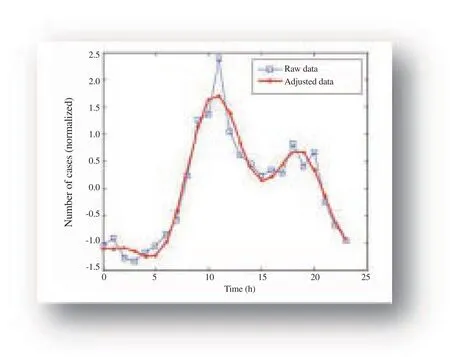
Figure 5. Circadian rhythm of the general population: bimodal pattern, with double morning peak and evening[28].
(5) “Myocardial infarction and biological clock: role of melatonin”[29]:
Results: clinical studies carried out in animal experimentation and human beings show the relationship between the serum concentration of this hormone and coronary arterial disease.
This research group has been investigating for years the relation between the circadian secretion of melatonin and myocardial infarction, showing how the variation of indolamine can influence,partially at least, in the triggering of this condition.
(6) “Cardiovascular risk factors in the circadian rhythm of myocardial infarction”[30]:
Results: In the group of the studied patients there was a predominance of male sex (66.5%). The distribution of age in groups showed that AMI occurred more frequently in people over 50 years of age. It is worth pointing out that 33.3% of the patients studied showed previous ischemic cardiopathy.
The prevailing risk factor was blood pressure (59.7%). It is important to highlight that 85.5% of the population studied had some kind of cardiovascular risk factors. It is important to point out that,globally, there are significant differences whether such factors are present or not.
(7) “Variability of heart rate and circadian cycle in patients with long congenital QT syndrome and repeatedly fainting”[31]:
“…in the prolonged QT interval syndrome and adrenergic seizures a decrease in HF and a simultaneous increase in LF during the morning and at sunset were observed; but the LF/HF quotient showed two increased peaks: one in the morning and the other in the evening.”
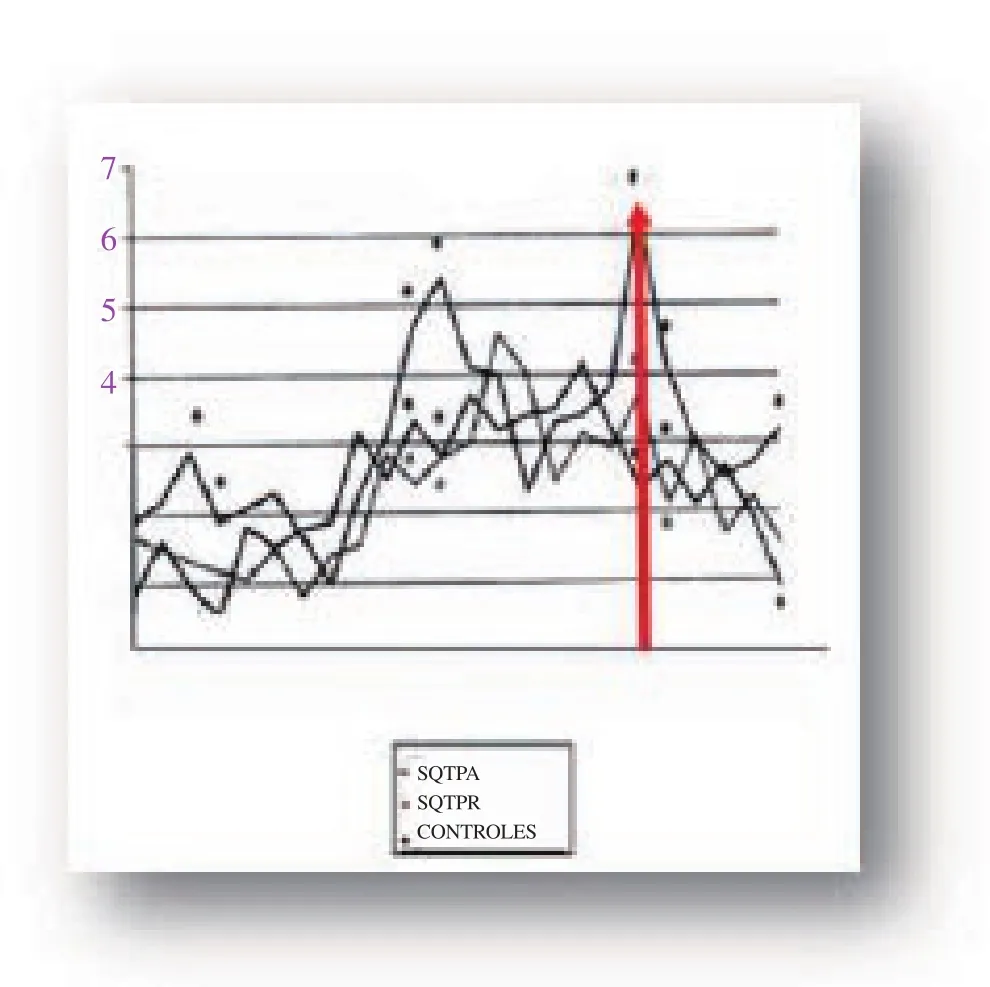
Figure 6. Simultaneous increase in LF (Low frequency) during the morning and at sunset[31].
Comparison between Dr. Rafael Acunzo′s study and chronobiological legacy of pulses in TCM. (This work was selected to take part for the XVII Award Interamerican Congress of Cardiology and for the XXVI Argentine Congress of Cardiology 1999*)
5. Discussion
Although the first observational descriptions of the present research are not so obvious now, our scientific methodology has not taken them into account until de first decade of the XXI century. The western studies considered as available material for the present work have revealed what the Chinese discovered centuries ago: a close relationship between certain pathological conditions and the chronobiological rhythms regulated by the alternation light and shadow in the circadian cycle.
As presented in the research: “The Circadian Clock of Heart Attacks:More Severe in the Morning”[27], it is precisely in the “chiaroscuro zones” of the luminous transition from and towards the dark what shows the organic vulnerability of the heart during those mutations.It is now important to remember the definition coined in the Ling Shu: “The Heart is the Great Yang within Yang” [32].
In this way, the incidence of more severe heart attacks during the morning coincides precisely with the entry of Yang in the day. It would seem that such entry of Yang would lead to suffering from an injury of said organ –as if this energetic polarity “overcharged”a weak heart – making it more vulnerable to injuries during the day.To sum up, we could infer that the incidence of the curve during the morning would be more related to underlying factors typical of the heart.
In the same way, the hours close to twilight would seem to be moresensitive to the disappearance of the positive polarity. When sunlight disappears, the energy that acts as “fuel” of the heart markedly loses strength, leaving this noble “organ of Fire” at the mercy of the“Primordial Water” which is capable of weakening its power until it is extinguished. For that purpose, Chinese Medicine has wisely been systematized, making this situation noticeable at pulse level,according to the specific relation of the meridians that are active participants of the recently discovered “Reconciliation Vessel”,extraordinary circuit intended for such purpose.
According to the studies above presented, the incidence of the second peak during the bimodal course of the curve regarding the evening frequency of the heart attack would be more attributed to the underlying general factors of the patients (hypertension – diabetes –hyperlipidemia –smoking- stroke- myocardial reinfarction,etc.) than to an injury of the bomb in itself.
A bimodal pattern can be observed in both cases, with an evening peak of incidence wider than the morning peak in smoking and diabetic patients[28]. We can read in the research called: “Myocardial infarction and biological clock: Role of melatonin”[29]:
“Documentary evidence shows the vital role that this indolamine plays in various physiopathological processes that are cardiovascular protectors: anti-inflamatory functions, antioxidants, anti-hypertensive and possibly antilipidemic”[29].
Despite being present since the first introductory classes of the study of pulses, the relation between the referred meridians shows a peculiarity that belongs only to this marriage. The Kidney as well as the Master of the Heart are “spouses” in pulses, and are also in charge of transmitting the chrono-biological legacy of the vital energy that curiously occurs every day at about 19 h (7 h p.m.)[15](Figure 7).
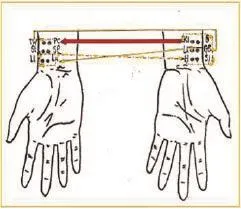
Figure 7. Kidney and master of the Heart, “spouses” in pulses.
It calls our attention that –among the twelve main meridians- these are the only two channels over which the properties presented occur simultaneously.
The above mentioned justifies the vital role that the Kidney and Xin Bao (“Master or Protector of the Heart”) play in the regulation of the cardiac activity during the circadian cycle.
Beyond this coincidence –not by chance in the field of Acupuncture and in Western Medicine as well- this particular connection makes us notice, since ancient times, that the Chinese perfectly knew the risk of this predisposing factor systematizing the methodology of their knowledge according to their experience as a result of observing this phenomenon.
The deductions made after the discussion of the work entitled:“Cardiovascular risk factors in the circadian rhythm of myocardial infarction”[30] was that, in type 2 diabetic patients, the onset of myocardial infarction shows a bimodal sinusoidal curve with a double peak: in the morning and in the evening hours (Figure 3 and Figure 5[28]).
A group of Argentine cardiologists also drew the same conclusions as to the study of the autonomic function by analyzing the variability of the heart frequency and of the circadian cycle of the spectral components in patients with a long congenital QT and repeated seizures, but with no objectionable organic cardiopathy[30].
It is not just a coincidence that the meridians of the Kidney and of the Master of the Heart had a very close relationship in view of those studies that, also for the Western world, suggested the existence of a moment during the day in which the most noble organ –the one gifted with the “Imperial Fire”- was at the mercy of unfavorable circumstances. It is also important to notice that the Chinese also spoke of its vulnerability at the daily moment of dominance of the organ diametrically opposed to its polarity (the Ling Shu announces the Kidney as the “Supreme Yin”[33]. Thus, it can be clearly understood the reason by which our organism needs to transmit its energetic legacy from the Kidneys towards the Pericardium or Master of the Heart: circuit whose aim is, according to the Chinese,to “protect and save the Heart.”
It could be said that the Chinese supported the possibility of a biological pacemaker at the beginning of the channel of the Kidney(driven by the Ancestral Energy) as well as another physiological mechanism of contingency in the presence of having a predisposition of certain phenomena that patho-physiologically “threat” the Heart(Xin) as it is the reference to the pulse of the only couple of organs that are capable of coupling as spouses and also of transmitting the energetic circadian cycle at the same time[34].
The recently published “Reconciliation Vessel” is precisely formed by the meridians of the Kidney and of the Master of the Heart so as to facilitate the vital support of the lower extremities as well as of the upper extremities, establishing a complete circuit that, in its origin,path, circulation and recycling of its Ancestral Energy enables it to play a vital support –superlative condition of the fundamentals of Traditional Chinese Medicine[34].
The authors of the third paper: “The circadian clock of myocardial infarction: more intense in the morning”[27] suggested that circadian fluctuations are related to some cardiovascular events at certain times of the day such as myocardial infarction, shock, malign arrhythmias,sudden death, ictus, aortic dissection and rupture of abdominal aneurism. For these authors, such observation leads to deduce the presence of a cardio-protective spontaneous variant mediated by certain hormones (catecholamine levels, cortisol circulating,etc.)[27].
6. Summarized conclusions of the present paper
Having made a retrospective analysis of the scientific papers presented, we could reach the following conclusions:
-Old Chinese doctors were already aware of the influence that the circadian cycle exerted over the cardiac function as they had described its relation with the path of Yin/Yang energy throughout the day arguing different pathological stages due to the inversion that occurred between both polarities.
-The periods stated by western scientific studies were, similarly to the Chinese description in the Ling Shu, curiously homonymous to the Chinese as they were divided into “Four Periods in a Day”[15]according to the variations of the bio-marker levels determined by the cohorts under study.
-A special analysis must be made as to the circadian reference regarding the bi-modal character of the heart condition resulting from checking larger infarcts during the transition of light and shadow throughout the day.
-The increase of the frequency of serious cardiovascular events between 17:00 to 19:00 h is absolutely coincident with the time referred to in chapter 40 of Ling Shu[15]
-Said data was also coherent with the findings suggested by the curves of myocardial necrosis markers[27].
-Western researchers, by means of strict and methodological scientific studies, concluded that there exists an important influence of the time of the day at which myocardial infarction occurs and its size.
-These findings would confirm natural spontaneous mechanisms of cardio-protection related to the circadian cycle mediated by certain hormones (catecholamines, cortisol,etc.)[27], similar to what was proved by the millenary Chinese medical systematization.
-Epidemiological studies have suggested and proved that this circadian fluctuation keeps a close relation with the onset of other serious cardiovascular urgencies: massive AMI, shock, malign arrhythmias, sudden death, ictus, aortic dissection, rupture of abdominal aneurisms[27].
As we have seen, the symbolic representation of Yin/Yang exerts a big influence over a great part of the cosmological, philosophical and medical principles that form part of life according to the Chinese[35].Its ancestral origin goes back to the Book of Changes (I-Ching) -masterpiece of the Chinese philosophy and literature which had been written more than 2500 years before. Said data refers to the way in which those powers give rise to the noticeable transformations in Nature. In consonance with Jaeger, understanding the constant mutations of the celestial and terrestrial[7] phenomena has led Chinese thought to better understand the immutable rules that govern everything that exists[36].
In Chinese Medicine, the perpetual interaction of these two forces makes it possible to re-establish the physical, biological and biochemical imbalances that are typical of each disease.
The search of such balance represents the homeostasis of the living system. In order to understand the hormonal chrono-biological cycles, as well as the form of mollusks, hurricanes or galaxies[37],the everlasting symmetry of the diagram of the Tao, offers a standard of “equilibrium in the function” that is nowadays difficult to be overcome.
Thus, we can extrapolate such knowledge to Chinese Medicine in order to make the relations presented evident as to the pathologies of increasing seriousness and of deep incidence and population impact.Cardiovascular diseases are at the top of the main causes of death according to WHO; and the death toll that they cause will increase catastrophically (18 000 000 victims in 2015 to 30 000 000 towards 2020), if no action is taken[37].
In this way, the chrono-biological path of energy from the Kidney to the Master of the Heart will ensure- according to the parameters of Chinese Medicine- a natural system of cardio-protection aimed at avoiding deleterious effects of the “withdrawal of light” within the circadian cycle. In fact, its proposition through the “Reconciliation Vessel” is the result of reverting disastrous consequences in the Heart (Xin), apart from being a valuable complement in all protocols focused on vital support.
By means of this work we will be able to use all that Chinese wisdom already known from millennia, and that, after the fabulous technological advances, we have not discovered yet.
Conflict of interest statement
The author reports no conflict of interest.
[1] Wikipedia.Ritmo circadiano. [Online]. Available from: https://es.wikipedia.org/wiki/Ritmo_circadiano/ [Accessed on 27th March 2018].
[2] National Institute of General Medical Sciences. Hoja informativa sobre los ritmos circadianos[Online]. Available from: https://www.nigms.nih.gov/education/Pages/los-ritmos-circadianos.aspx/ [Accessed on 20th Februrary 2018].
[3] Escobar C, Martinez-Merlos M, ángeles M, Mendoza J. Food as a synchronizer of biological rhythms: its relevance for the identification of a circadian oscillator.Rev Fac Med UNAM2001; 44(2): 58-62.
[4] Takeuchi S, Nawashiro H. Circadian rhythms of serum atrial natriuretic peptide.Acta Neurochir2011; 153(5): 1153.
[5] Hua- Ching Ni.Hua Hu Ching.Buenos Aires: Kier; 2001,p. 67.
[6] Liao SJ, Lee MHM, Ng LKY. Principles and practice of contemporary acupuncture. New York: Marcel Dekker, Inc. ; 1974,p.45.
[7] Jaeger S. Chapter 2: A geomedical approach to Chinese Medicine: The origin of the Yin-Yang symbol. In: Kuang HX (ed).Recent advances in theories and practice of Chinese Medicine. Rijeka: InTech; 2012, p. 32.
[8] Jaeger S. Chapter 2: A geomedical approach to Chinese Medicine: The origin of the Yin-Yang symbol. In: Kuang HX (ed).Recent advances in theories and practice of Chinese Medicine. Rijeka: InTech; 2012, p. 33.
[9] Jaeger S. Chapter 2: A geomedical approach to Chinese Medicine: The origin of the Yin-Yang symbol. In: Kuang HX (ed).Recent advances in theories and practice of Chinese Medicine. Rijeka: InTech; 2012, p. 35.
[10] Tsai A. Where does the Yin Yang symbol come from? [Online]. Available from: https://www.chinesefortunecalendar.com/YinYang.htm/ [Accessed on 20th Februrary 2018].
[11] Jaeger S. Chapter 2: A geomedical approach to Chinese Medicine: The origin of the Yin-Yang symbol. In: Kuang HX (ed).Recent advances in theories and practice of Chinese Medicine. Rijeka: InTech; 2012, p. 34.
[12] Hoang Ti. Chapter 9: Seven heavens and the functional manifestations.In:Su Wen.Part I. Buenos Aires: Continente: Continente, 2009, p. 109.
[13] Diagram inspired in Sussmann, D. Introduction.Acupuncture: theory &practice. 14th ed. Buenos Aires: Kier ; 2003, p. 26.
[14] Liao Sung J, Lee Matheu HM, Ng Lorenz KY.Principles and practice of contemporary acupuncture. Marcel Dekker, Inc. :New York;1974, p.13.
[15] Hoang Ti. Chapter 40: Four periods in a day. In:Ling Shu. 1st edition.Buenos Aires: Continente;2009,p.186.
[16] Hoang Ti. Chapter 6: Separation and meeting of Yin and Yang. In:Su Wen.Part I Book I. Continente: Buenos Aires; 2009, p.96.
[17] Hoang Ti. Chapter 4: Last truth in the library golden emperor. In:Su Wen; Part I; Book I. Ed. Continente: Buenos Aires;2009,p. 69-70.
[18] Hoang Ti. Chapter 5: Great treatise on Yin-Yang classifications of natural phenomena. In:Su Wen; Continente. Buenos Aires, Argentina:2009,p. 78.
[19] Hoang Ti. Chapter 3: Of the correspondence between the life energy and the energy of heaven. In:Su Wen. Continente: Buenos Aires;2009, p. 60.
[20] Hoang Ti. Chapter 3: Of the correspondance between the vital energy and the energy of heaven. In:Su Wen; Continente: Buenos Aires; 2009,p.61.
[21] Hoang Ti. Chapter 5:Great treatise on Yin-Yang classifications of natural phenomena. In:Su WenBook II. Buenos Aires: Continente; 2009,p.88.
[22] Hoang Ti. Chapter 3: Of the correspondence between the life energy and the energy of heaven. In:Su Wen. Book I. Buenos Aires:Continente;2009, p.78.
[23] Hoang Ti. Chapter 4: Last truth in the library golden emperor. In:Su Wen; Book II. Buenos Aires: Continente;2009, p.71.
[24] Hoang Ti. Chapter 3: Of the correspondence between the energy of life and the energy of heaven. In:Su Wen. Book I. Buenos Aires: Continente.2009,p. 60.
[25] López Messa J, Garmendia Leiza J, Aguilar García MD, De Llano J,Alberola López C, Ardura Fernández J. Analysis of the cardiovascular disease risk factor in the circadian cycle of the acute myocardial infarction.Rev Esp Cardiol2004; 57(9): 850-858.
[26] Tartabull Poutriel K, Rodríguez López AJ, Nicolau Pestana E. González Martínez F. Circadian rhythm in acute myocardial infarction. Revista Archivo Médico de Camagüey.[Online]. Available from: http://scielo.sld.cu/scielo.php?script=sci_arttext&pid=S1025-02552009000100010[Accessed on 20th March 2018]
[27] Nú?ez Gil. The circadian clock of myocardial infarction: more intense in the morning. Cardiología Hoy. 2011. [Online]. Availble from: http://secardiologia.es/multimedia/blog/3342-el-reloj-circadiano-de-losinfartos-mas-grandes/ [Acceseed 20th February 2018].
[28] Barneto Valero MC, Garmendia Leiza JR, Ardura Fernández J, Casaseca de la Higuera JP, D Llano JMA, Corral Torres E. Relation between myocardial infarction and cyrcadian rhythm in patients attended in a prehospital emergency service.Med Clin2012; 139(12): 515-521.
[29] Dominguez Rodriguez A, Abreu Gonzalez P, Burillo Putze G. Myocardial infarction and biological clock: Role of melatonin.Med Clin (Barc)2013;141: 92-93.
[30] Aroche R, Naranjo A, Rodríguez A, Llera R. Cardiovascular risk factors in the circadian rhythm of myocardial infarction.Rev Fed Arg Cardiol2013; 43(1): 32-37.
[31] D’ Negri CE, Marelich L, Vigo D, Acunzo RS, Girotti LA. Cardinali DP.Siri LNL. Circadian periodicity of heart rate variability in hospitalized angor patients.Clin Auton Res2005;15(3):223-232.
[32] Hoang Ti. Chapter 9: On the six cycles and its organic manifestations. In:Su Wen. Buenos Aires: Continente. 2009,p.111.
[33] Hoang Ti. Chapter 37: Yang and Yin. The sun and the moon. In:Ling Shu. Buenos Aires: Continente;2009,p. 176.
[34] Inchauspe AA. New advances in research on reconciliation vessel for emergency treatments.J Acute Dis2016; 5(4): 271–280.
[35] Luoshu R. Where does the Yin Yang symbol come from? [Online].Available from: http://www.onlineclarity.co.uk/friends/showthread.php?10027-Where-does-the-Yin-Yang-symbol-come-from [Accessed on 27th March, 2018 ].
[36] Tian H, Tian F. The true origin of Zhou Yi [Chinese]. Taiyuan: Shanxi Science and Technology Publishing House; 2004.
[37] Jaeger S. Chapter 2: A geomedical approach to Chinese Medicine: The origin of the Yin-Yang symbol. In: Kuang HX (ed).Recent advances in theories and practice of Chinese Medicine. Rijeka: InTech; 2012, p. 31.
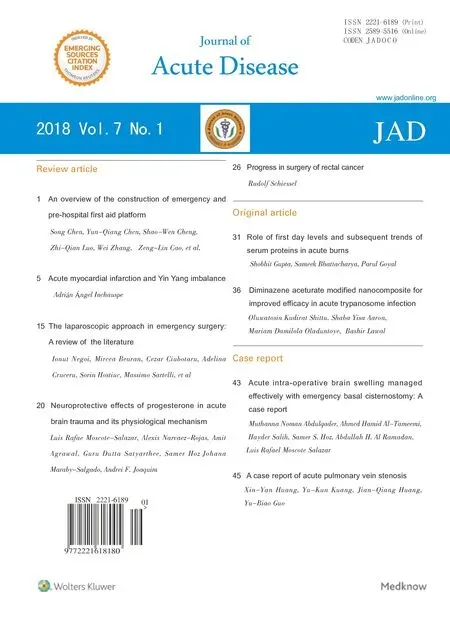 Journal of Acute Disease2018年1期
Journal of Acute Disease2018年1期
- Journal of Acute Disease的其它文章
- A case report of acute pulmonary vein stenosis
- Acute intra-operative brain swelling managed effectively with emergency basal cisternostomy: A case report
- Diminazene aceturate modified nanocomposite for improved efficacy in acute trypanosome infection
- Role of first day levels and subsequent trends of serum proteins in acute burns
- Progress in the surgery of rectal cancer
- The laparoscopic approach in emergency surgery: A review of the literature
